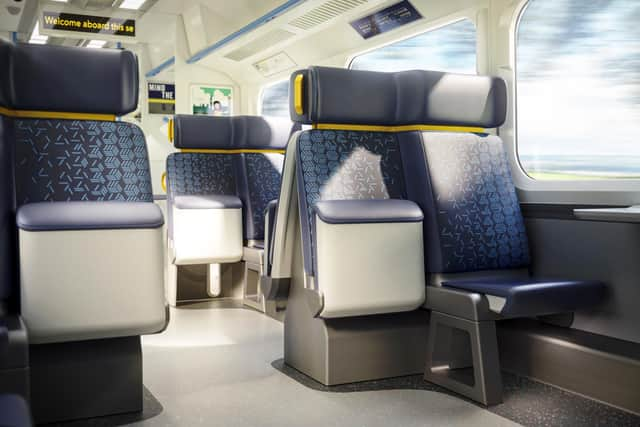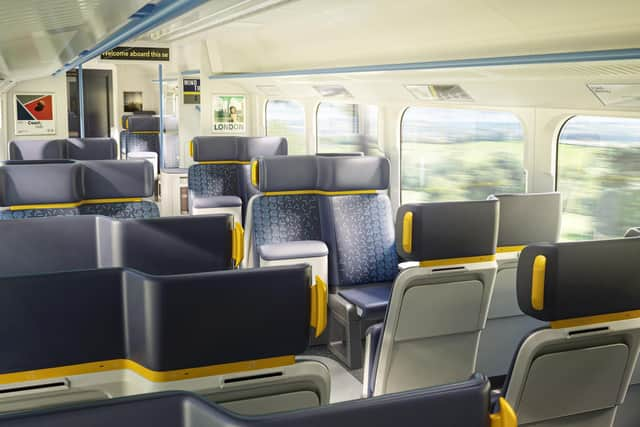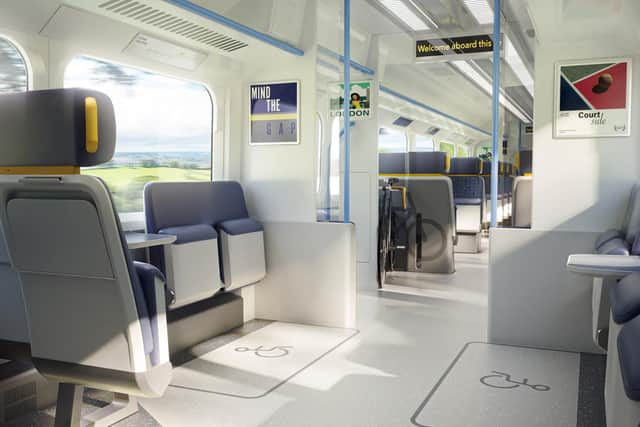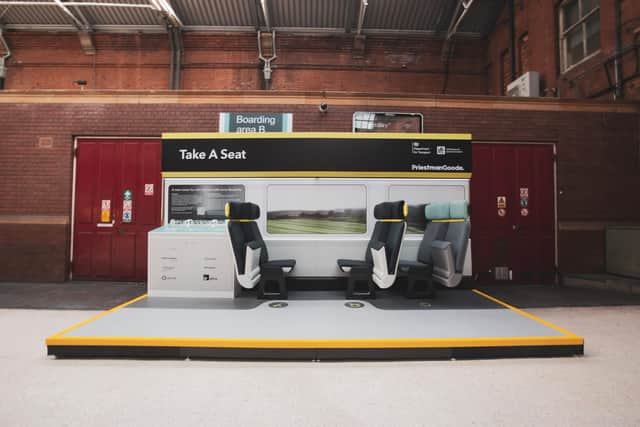First look at potential new designs coming to Aylesbury commuter trains
and live on Freeview channel 276
A transport design consultancy company has launched a demonstrator showing how it believes commuter trains from Aylesbury should look in the near future.
PriestmanGoode has unveiled a new train interior design aimed at Chiltern Railway trains travelling in and out of London.
Advertisement
Hide AdAdvertisement
Hide AdCalled, the Proteus rail interior system, it is a collection of ideas designed to offer more flexibility and comfort for travellers.


It also has updated the design layout of the popular trains and the company believes it has modernised the seating system to reflect post-pandemic work choices.
PriestmanGoode says one of the goals behind the project is to bring more passengers back to rail.
Funding was awarded to the consultancy via the Department for Transport’s First of a Kind competition run by Innovate UK.
Advertisement
Hide AdAdvertisement
Hide AdPriestmanGoode received sponsorship for its entry from Angel Trains and Chiltern Railways.


Travellers using the rail service today (22 March), can view a demonstrator which has been set up in Marylebone Station.
Curious commuters can sit on the newly designed seats and inspect aspects of the train layout.
Son Tran, director at PriestmanGoode said: “The design adds comfort and features that should make rail the first choice over certain distances.
Advertisement
Hide AdAdvertisement
Hide Ad"Having witnessed passengers in various layouts available today, our conclusion was that future train interiors need to be more flexible to meet different passenger needs at different times of the day or different stages of the week.


"This flexibility needs to be built-in for operators to avoid engineering intervention.
“A further requirement was to maintain capacity onboard in anticipation that the volume of passengers will eventually return to pre-pandemic levels. We have eliminated many of the current pain points, with only a very minimal reduction in overall seat count.”
A PriestmanGoode spokesman said: "Proteus takes its name from the Greek God’s ability to assume many forms and foretell the future."
Advertisement
Hide AdAdvertisement
Hide AdThe main changes put forward have come in response to different patterns in commuter travel, a busier leisure market, and increased concerns over personal hygiene, the company says.


Here are some of the key features the business wants to highlight:
An innovative staggered seat layout that eliminates ‘shoulder clash’ and a headrest to improve comfort and privacy
- A wider, more accessible aisle with a 2-2 seat configuration achieved by the removal of the unpopular and under-utilised middle seat
Advertisement
Hide AdAdvertisement
Hide Ad- Pairs of seats designed for comfort, with tip-up seat pan on aisle seats, allowing passengers to keep cases or fold-up bikes close-by.
- Benefits for families with buggies allowing them to travel together in the carriage in open bay seats that offer the same tip-up seat flexibility
- Flexible spaces adjacent to all entrance vestibules with longitudinal seating that can be used for multiple purposes, depending on demand
- The latest developments in sustainable materials, trims and finishes used
Advertisement
Hide AdAdvertisement
Hide Ad“Future journeys must be the best possible experience to compete against the convenience of working from home and get people out of their cars,” added Mike Lambourn, senior project head at PriestmanGoode.
“The staggered seat design is an innovation that provides a greater sense of space.
"The tip-up seat pan on aisle seats encourages a flow of passengers to the fixed window seats first and creates valuable space for passengers who want to complete the first or last mile of a journey on a fold-up bike - as an example.
"A great focus was placed on accessibility, with flexible spaces adjacent to every set of doors. The longitudinal seats in these areas allow alternative use for bike storage, standing or additional luggage - ensuring the entrances remain unblocked.”
Advertisement
Hide AdAdvertisement
Hide AdPriestmanGoode cautions these changes are subject to a design registration.
James Brown, decarbonisation manager and project sponsor at Angel Trains, said: “The rail industry has been significantly impacted by the pandemic, and we want to ensure passengers are comfortable getting back on trains, one of the greenest and most efficient modes of transport.
"These innovative designs from PriestmanGoode show how rail travel can be optimised in a post-Covid world to provide passengers with a greater sense of personal space. It has been a pleasure to collaborate with them alongside Chiltern Railways, the Department for Transport and Innovate UK.”
The new seats on offer were built by PriestmanGoode's engineering partner, Quantum Seating Limited.
Advertisement
Hide AdAdvertisement
Hide AdIan Hyde, engineering director for Chiltern Railways said: "We are always focused on how we can improve the experience of our customers and always looking for innovation and creativity.
"This seating concept demonstrates what may be achieved with clever and varied thinking and it will be interesting to see the feedback received.
"Whilst we have no current plans to change our train layouts, the concepts presented are a useful consideration as the railway adapts to changing customer needs and expectations, particularly around increases in leisure travel across the network."